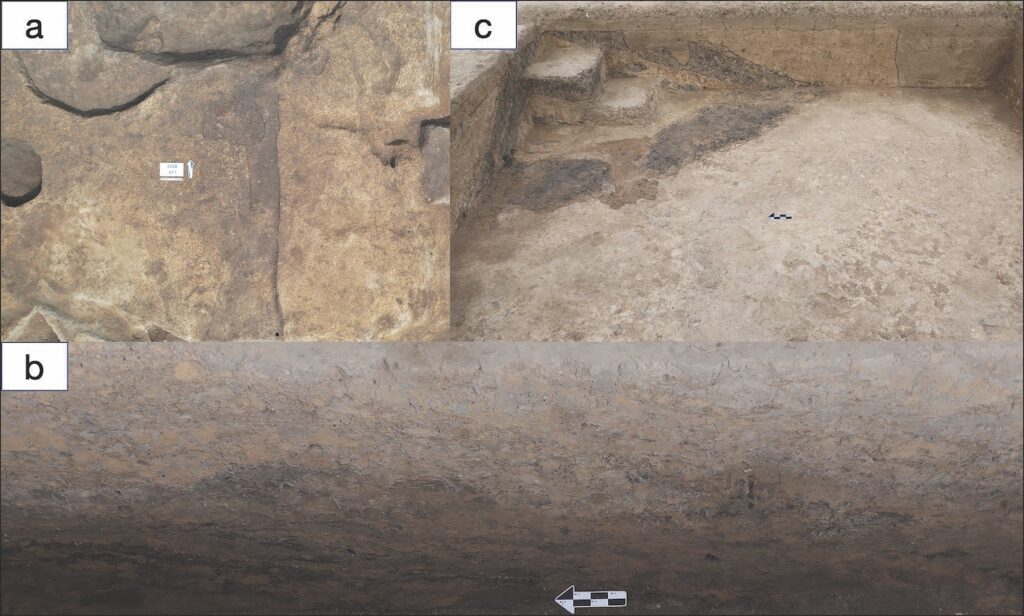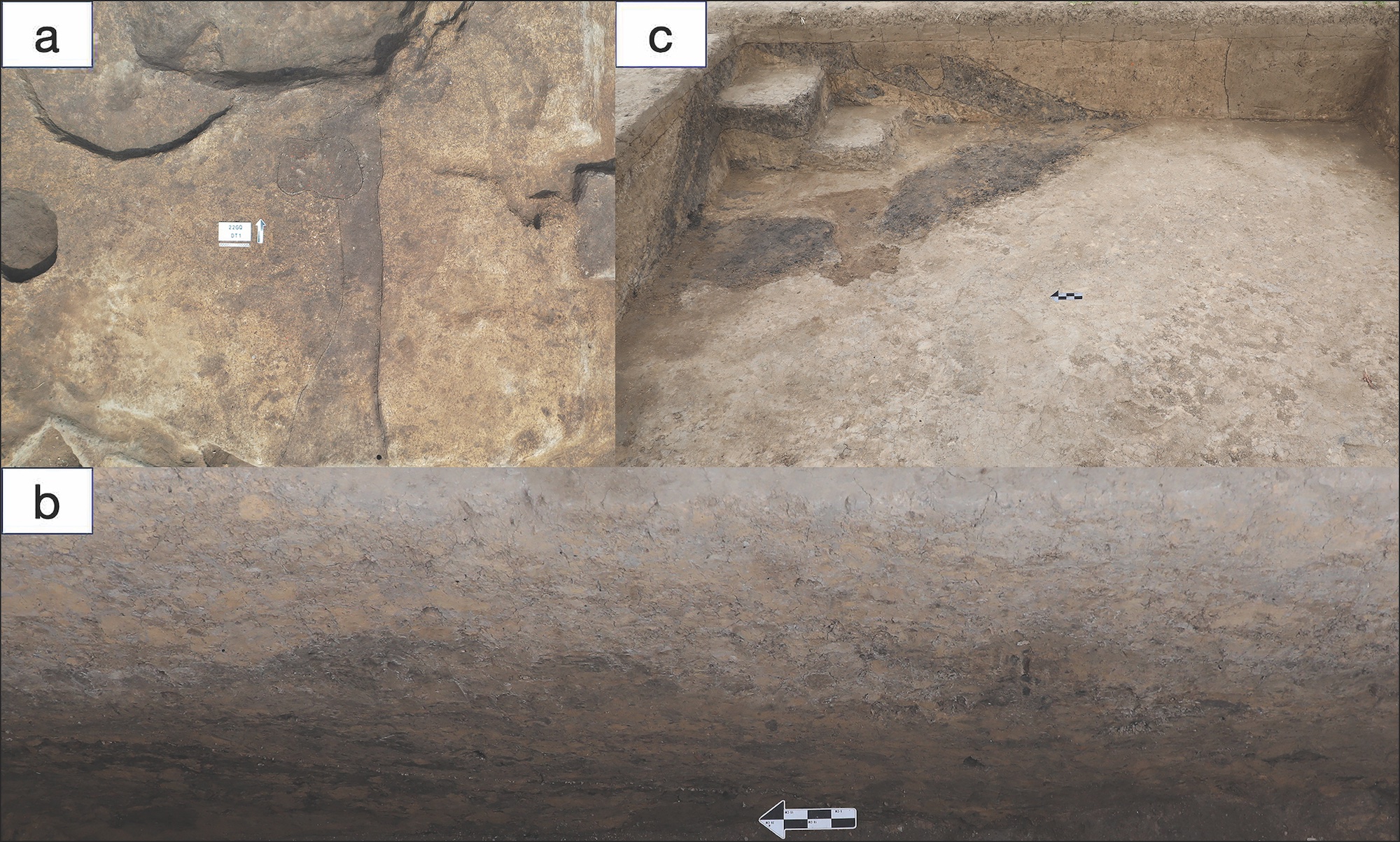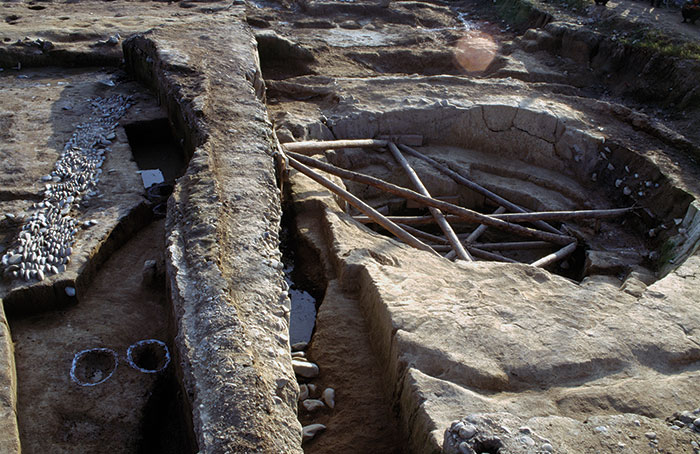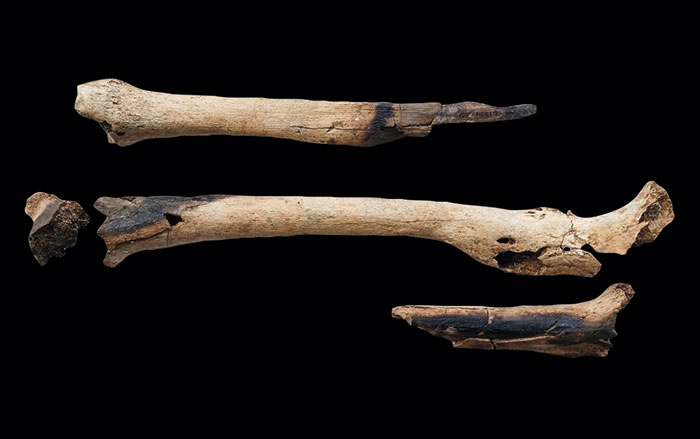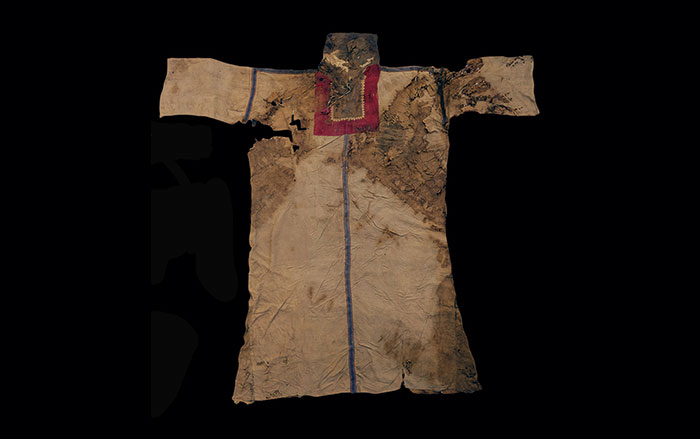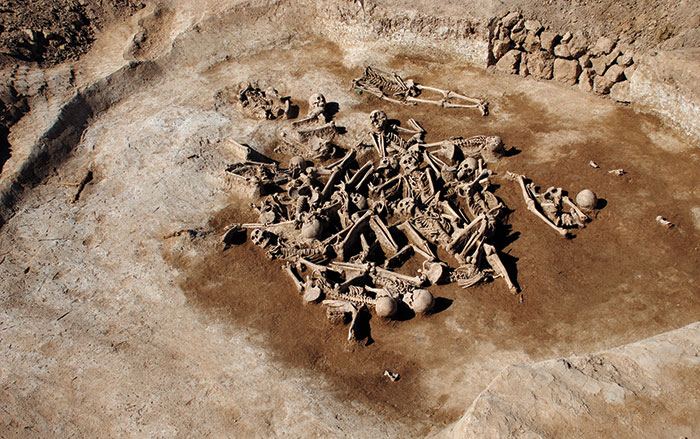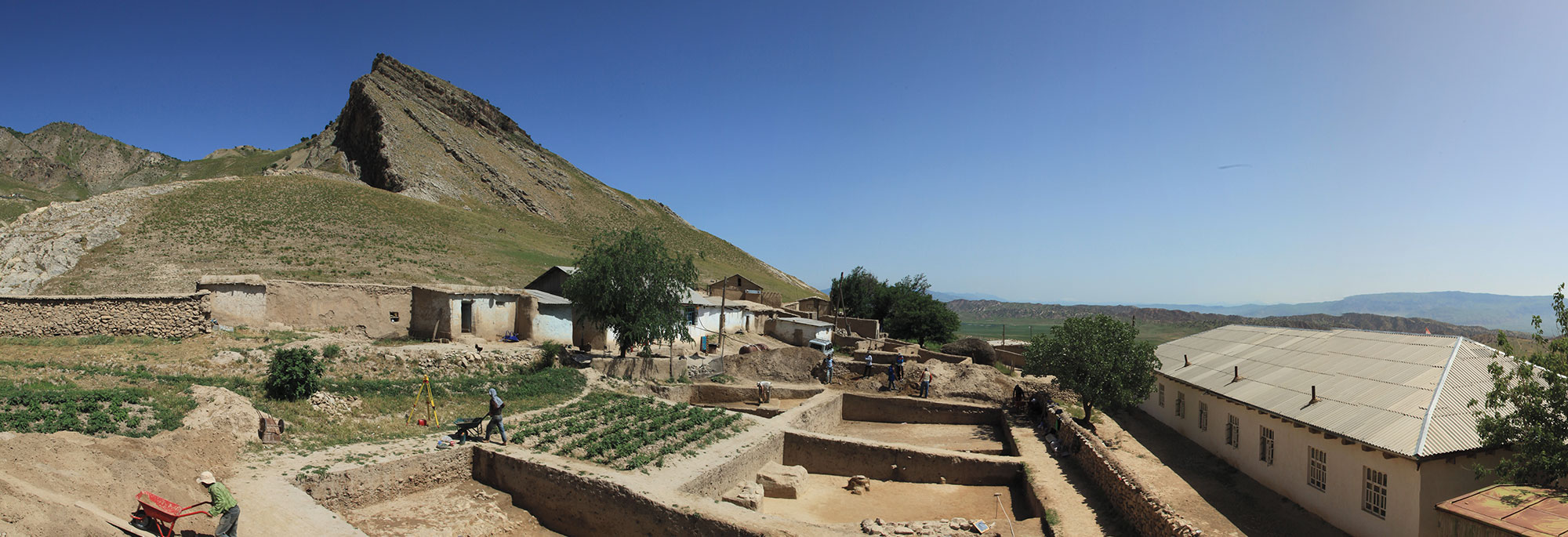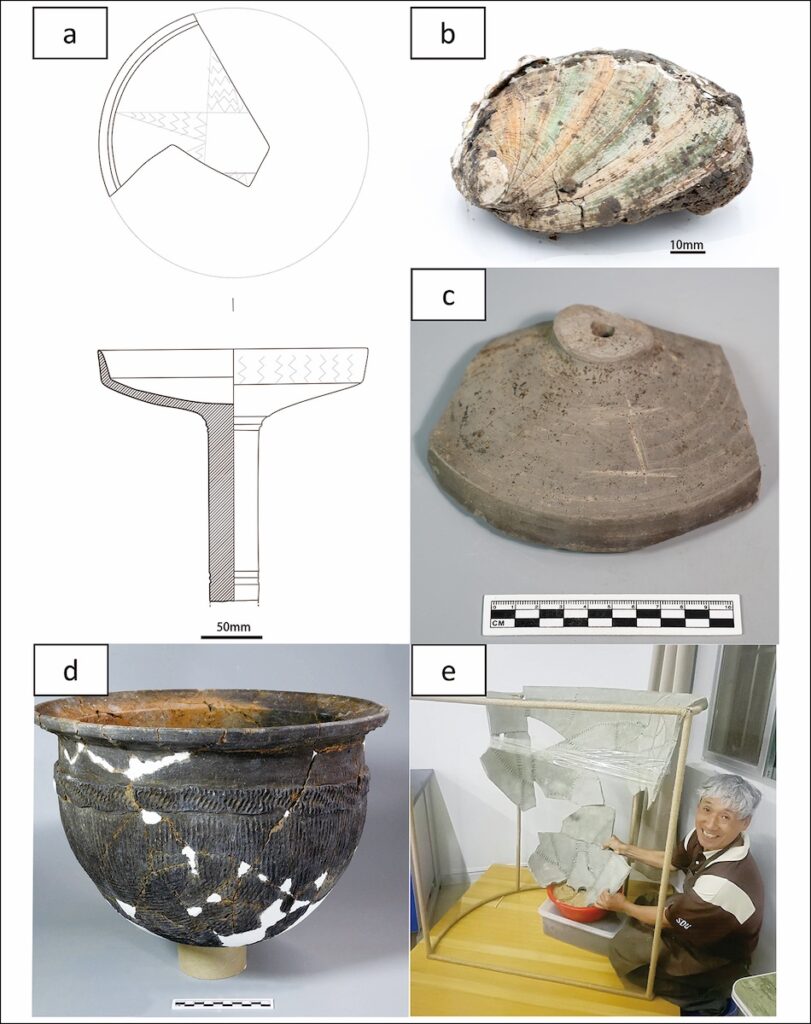
SHANDONG PROVINCE, CHINA—Three ritual platforms unearthed in eastern China at the site of Qianzhongzitou may be linked to political unification in 221 B.C. under Qin Shihuangdi, the first emperor of the Qin dynasty, Phys.org reports. Excavated by a team of researchers led by Qingzhu Wang of Shandong University, Qianzhongzitou began as a small village before it became a ritual center. The first platform has been dated to the Western Zhou period, between 1046 and 771 B.C. The other two platforms were constructed during the Warring States period, between 475 and 221 B.C. The platforms were made with different colors of earth, and one of them had been marked with the character tu, translated as “earth.” Food remains and cooking vessels found at the platforms suggest that large-scale feasts were held there, perhaps as a way to bring the local population together and adapt local cults through shared rituals of earth worship. “Elites strategically utilized grand public rituals and feasting on monumental platforms to integrate diverse peoples and their spiritual beliefs, cultivating a shared identity that helped form powerful states,” Wang explained. Read the original scholarly article about this research in Antiquity. To read about Qin Shihuangdi's tomb full of terracotta warriors, go to "Emperor's New Army."
